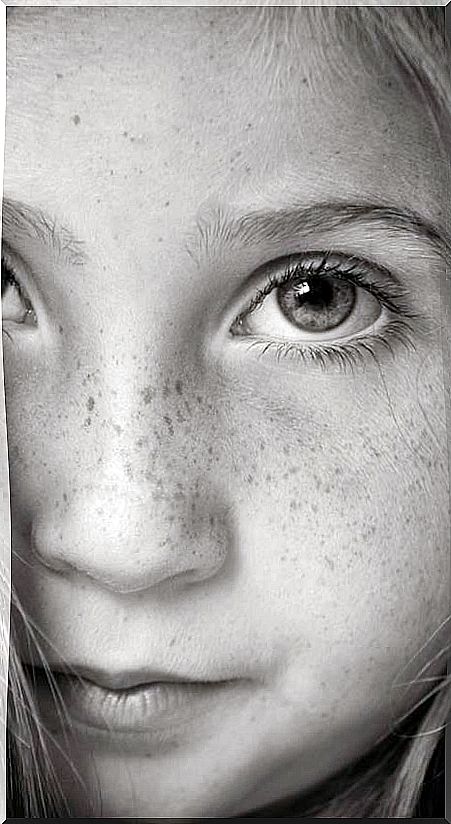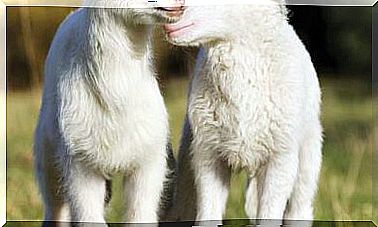Autism: A World Of Controversy And Overdiagnosis
The enormous increase in autism cases responds to a confused and polarized interpretation of this disorder. The experts do not coincide.

After checking the physical integrity of a newborn, the highest expectation is to meet his gaze. In his first days of endless dreams, and with that vigilant concern of verifying that he is still alive, we hope to find among his difficult grimaces a gesture, a sound, something that tells us that he connected with the world and with us.
But what happens if that does not occur, is generated very punctually, was but disappeared or is concentrated in only one type of situations or ideas? What happens if the little one is isolated?
What is autism and how do we diagnose it?
These coordinates are used to diagnose what is technically known as Autism Spectrum Disorder (ASD). This condition includes all kinds of behaviors, from that child or adolescent who does not articulate practically any words, through the permanent imitator, the one who attacks others or attacks himself, who continuously repeats a certain action, who suffers significant school delay , or the specialist in a subject that does not stop talking about it (Asperger’s Syndrome).
With this hodgepodge, and taking into account that we are facing the first experiences of the constitution of human beings, the controversy about the convenience or not of early and preventive diagnosis, as well as the way to approach it, is served.
Supporters of preventive diagnosis
There are those who defend a very early assessment, but from very different perspectives and objectives.
Professionals “official”, manual
Among them we find the most “official” doctors and professionals, that is, those who are based on International Manuals such as the DSM, whose starting point is that they are neurobiological disorders and that, therefore, the sooner they are medicated and the bad behaviors are rectified, the less negative consequences they will have for the patient.
In no case is there talk of cure, since they are considered chronic and disabling diseases forever.
The criticisms raised about this view are that, in addition to not being able to demonstrate such an organic and / or genetic origin, the changes and ambiguity of criteria that have been produced in the different revisions of said Manuals broaden the behaviors so much that it could be considered autistic any type of inhibition, difficulty or slowdown in the achievement of socio-educational skills, with the consequent damage of being stigmatized under a clinical category that is chronic and discriminatory.
Dynamic professionals
Another position is suggested and maintained by dynamic psychoanalysts and psychologists, for whom the first stage of life is in which short-circuits can occur in the newborn’s relationships with the environment and with the people around him, and that is there when to act.
The central work is to try to establish communication based on a better understanding of the child’s code, thus adapting the messages to their special sensitivity, without renouncing their progressive integration into a symbolic world that is not always guided by those same ones. codes.
We have on the Internet books and videos of this way of proceeding, such as those by the psychoanalyst Marie-Christine Laznik, in which you can see how changing the tone of voice, lighting or colors is able to capture the Babies care.
You can also capture how distressing the approach of the mother or the father in an attitude of kissing the feet or the tummy can become for them. What for another baby is cause for laughter and fun, for them can be scary.
Contrary to preventive diagnosis
Faced with the defenders of the preventive approach to autism, we find those who are totally against, arguing that such an early and decisive diagnosis for the child’s future only brings negative consequences, since certain forms of child behavior are due to immaturity within the child. own process of cognitive-affective development, and that these can disappear spontaneously without the need for any treatment.
For these currents, the diagnoses would have to be established from possible failures in the school environment, thus being able to differentiate well which are the areas that suffer the greatest deterioration (those of interrelation, cognitive or motor) and act on them.
Agents, causes and foundations of autism
There is no doubt that the different appraisals are due to different ways of understanding the human being and what can disturb its genesis as such. Currently there are different hypotheses regarding its causes.
The idea that autism is a physiological pathology due to the negative incidence of external agents such as pesticides, which are found in the products we ingest, or the poisonous content of the active ingredients present in vaccines, is becoming more and more widespread. or even hypervaccination.
But if we return to the experts, for the majority of psychiatrists, cognitive-behavioral psychologists and neurologists, the cause of ASD is an organic-brain lesion presumably of genetic origin. However, unlike rigorously genetic brain lesions, such as Down syndrome, which has a chromosomal location detectable with a simple test, with respect to autism nothing similar has been demonstrated.
There is talk of supposed inflammations of some area of the brain, but it cannot be determined if they are the cause or the consequence of said dysfunction.
This does not imply that we do not find real effects, both physical and psychological, in people who see a function hindered and hindered that would allow them greater fluidity and communication with themselves, with their body, with the environment and with the symbolic tools that allow us to develop. Commonly.
Do not confuse the difficulty in a function for which our body is prepared, with the injury to an organ that totally prevents the exercise of the function.
A psychodynamic perspective on autism
For the most dynamic currents there are certain psychophysiological functions that are set in motion in the interrelation with other congeners. This already happens in all animal species, and is studied by Ethology.
The same happens in the human being, but the system in which an individual has to develop is much more complex and open, so it can run into greater pitfalls.
If we listen to these autistic children, those who have been able to express something of what is happening inside them, the first thing they report is the unbearable intensity of a whole series of external stimuli, mainly those related to acoustics (voices, noises, etc. ) and the visual, such as glare from natural or artificial lights.
Already Freud, in his very early works, made a detailed description of the way in which the newborn perceives things. At the beginning, record the direct amount of the stimulus. If this sensation produces uneasiness but is calm, it will be experienced as well-being, but if not, the discomfort will prevail invading the entire psyche.
The general tendency, when these discomforts reappear, will be to take refuge in the memories of complacent experiences trying to repeat them over and over again, but if it is not achieved, the tantrum is assured.
The next step in the maturation of our mind is that, at a certain moment, we no longer have to suffer directly the great burdens of sensations directly and massively, but words are replacing stimuli and that allows us to resolve them without having to experience them in all their power.
It’s kind of like when there is a lot of noise somewhere and we say “How loud there is!” They are phrases that seem to reduce the annoyance, partially get rid of it and continue. It is in this phase where subjects with autistic traits find the greatest problems, due to their difficulty with language and the possibilities that can be found in it.
The other aspect of this process is the relationship with caregivers. Human rearing needs a person to get it out of the discomfort caused by both its nutritional and environmental needs.
In this connection with the helper, Freud tells us, the adult is divided into two components. The first is the one that satisfied the urge and that will be known, but that the baby will not live as coming from an alterity, but as something of his that restored his calm and that he will always want to repeat in the same way.
The second component of the adult will be the unknown, the different, the strange for the baby, which can be experienced as something threatening. In a habitual journey, both aspects become integrated, converge and recognize themselves in the same person, losing their persecutory characteristics.
It is precisely this confluence that fails in autism, and adults are experienced not as helpers but as belonging to another world that is not their own. It is not difficult to find in them ideas such as those expressed by the very young Naoki Higashida in his book The reason why I jump (Roca Ed.) In which, for example, he says that autistics do not like loneliness, but that they like it makes you nervous to make others angry, and that’s why they often end up alone.
It is also quite common to find parents frustrated because they want to offer all the love and resources to their child and this, however, shuns them.
We are confronted, therefore, with two codes of expression that should be able to find a formula to convey both aspirations.









